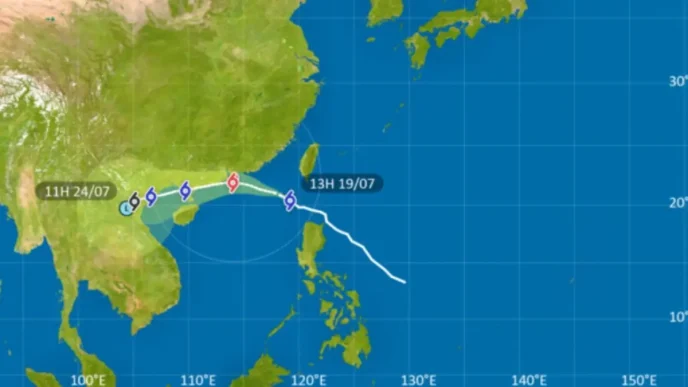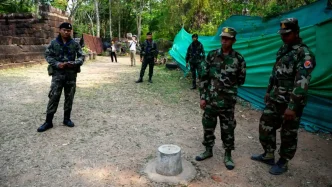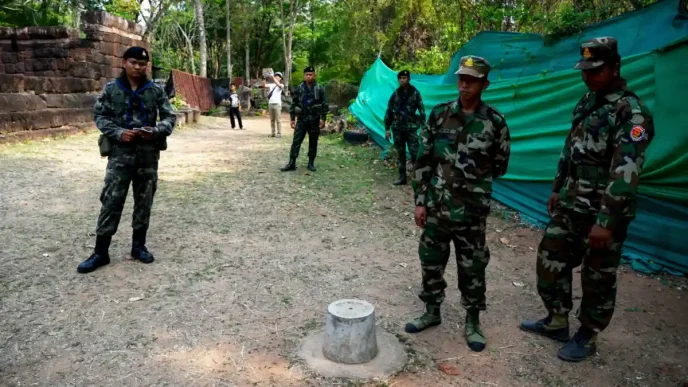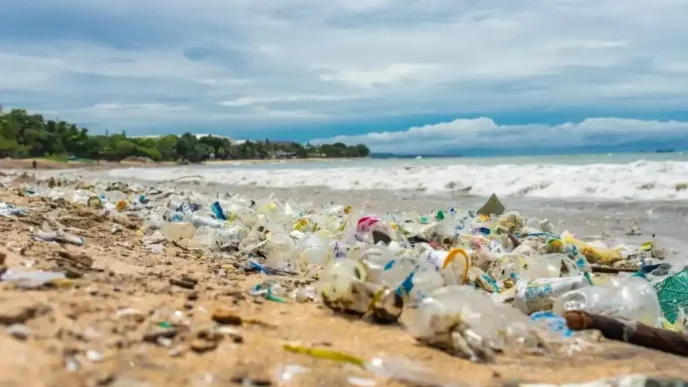Thailand’s Department of Health has sounded the alarm over a sharp rise in heatstroke-related deaths as the country braces for dangerously high temperatures through early May 2025. With 32 cases of heat-related illnesses already reported this year, and forecasts predicting “extremely dangerous” heat index levels in multiple regions, public health officials are urging vigilance, particularly among vulnerable groups.
A Deadly Trend
Over the past six years (2019–2024), Thailand has recorded 212 heatstroke fatalities, averaging 27 deaths annually. The majority of victims were men—197 cases—aged between 41 and 60, often with underlying health conditions. Factors such as prolonged outdoor activity and alcohol consumption have been identified as significant contributors to these deaths. In 2025 alone, the country has seen 32 reported heat-related illness cases, translating to a rate of 0.07 per 100,000 population. Trat Province leads with the highest incidence, followed by Sa Kaeo, Prachinburi, Loei, Nakhon Ratchasima, and Phrae.
Public Health Minister Somsak Thepsuthin highlighted the urgency of the situation, pointing to data showing that most victims were already at risk due to pre-existing medical issues or lifestyle factors. “This is a preventable tragedy” he said during a recent press briefing. “We must act now to protect our communities, especially those who are most vulnerable.”
Extreme Heat Forecasts
The Thai Meteorological Department, in collaboration with the Ministry of Public Health, has issued warnings for the period of April 27 to May 6, 2025, projecting dangerous heat index levels across the country. The heat index, often referred to as the “feels-like” temperature, accounts for humidity alongside air temperature, creating conditions where the body struggles to cool itself through sweating. In Thailand’s Northern, Northeastern, Central, Eastern, and Southern regions, the heat index is expected to range from 42.0°C to 51.9°C, classified as “dangerous” (orange level). More alarmingly, some areas may experience “extremely dangerous” (red level) conditions, with heat index values surpassing 52°C.
Four southern provinces—Phuket, Pattani, Nakhon Si Thammarat, and Songkhla—are forecasted to face the most hazardous conditions. For residents and tourists in these areas, the combination of high heat and humidity poses a severe risk of heat exhaustion and heatstroke, particularly for those unaccustomed to such extremes or engaged in outdoor activities.
Vulnerable Populations at Risk
The demographic data on heatstroke victims paints a stark picture of vulnerability. Middle-aged men, often working in outdoor occupations such as construction or agriculture, are disproportionately affected. Health experts note that underlying conditions like hypertension or diabetes, common in this age group, exacerbate the body’s inability to cope with extreme heat. Additionally, lifestyle factors such as alcohol consumption—known to dehydrate the body—have been flagged as a recurring issue among fatalities.
The elderly and those with chronic illnesses are also at heightened risk, as are children who may not recognize the early signs of heat stress. Public health campaigns are now targeting these groups with specific advice: stay indoors during peak heat hours, wear lightweight clothing, and seek immediate medical attention if symptoms like dizziness or nausea emerge.
Climate Change Connection
The rising incidence of heat-related illnesses in Thailand aligns with broader global trends driven by climate change. According to the World Health Organization (WHO) and the Intergovernmental Panel on Climate Change (IPCC), over half of the world’s population could face dangerously high temperatures for at least 20 days annually by 2050. For tropical nations like Thailand, the risk of heat-related deaths could triple, with profound implications for public health systems already strained by other challenges.
Thailand’s tropical climate, characterized by high humidity year-round, amplifies the dangers of rising temperatures. As global warming accelerates, experts warn that heatwaves will become more frequent, intense, and prolonged, disproportionately affecting low-income communities and outdoor workers who lack access to cooling or adequate rest breaks. “This is no longer a distant threat” said Dr. Ananya Srisuk, a climate health researcher based in Bangkok. “We are seeing the impacts now, and they will only worsen without urgent action.”
Public Health Response
In response to the crisis, the Department of Health has rolled out a series of recommendations aimed at preventing further casualties. Minister Somsak Thepsuthin emphasized the importance of hydration, advising the public to drink water regularly even if they do not feel thirsty. He also cautioned against consuming alcohol, sugary drinks like green tea or sodas, and other intoxicating beverages that can dehydrate the body during extreme heat.
Additional measures include public awareness campaigns in high-risk provinces, the distribution of informational materials in multiple languages for tourists, and coordination with local hospitals to prepare for an influx of heat-related cases. Schools and workplaces are being encouraged to adjust schedules to avoid outdoor activities during the hottest parts of the day, while community centers in rural areas are opening cooling stations for those without access to air conditioning.
Economic and Social Impacts
Beyond the immediate health risks, the heatwave is beginning to strain Thailand’s economy and social fabric. Outdoor industries such as agriculture, construction, and tourism—key pillars of the national economy—are facing disruptions as workers fall ill or reduce hours to avoid heat exposure. Small-scale farmers, already grappling with drought conditions in some regions, are particularly hard-hit, with crop yields threatened by the unrelenting heat.
Tourism, a major revenue source for provinces like Phuket and Pattaya, may also take a hit as visitors reconsider travel plans amid warnings of hazardous conditions. Local businesses, from street vendors to beachside resorts, report a dip in foot traffic during peak heat hours, raising concerns about lost income during what is typically a busy season. “We rely on tourists to survive” said Kanya Boonmee, a vendor in Phuket. “But who wants to walk around when it feels like 50 degrees?”
Looking Ahead: Adaptation and Mitigation
As Thailand grapples with this immediate crisis, the long-term challenge of adapting to a warmer world looms large. Urban planning experts are calling for greener cities with more tree cover and reflective surfaces to reduce the urban heat island effect, particularly in densely populated areas like Bangkok. Meanwhile, renewable energy advocates argue that reducing greenhouse gas emissions must be a priority to slow the pace of global warming, even as adaptation measures are scaled up.
At the community level, grassroots initiatives are emerging to support vulnerable populations. In Trat Province, local volunteers have organized water distribution drives for outdoor workers, while in Nakhon Ratchasima, temples are opening their doors as daytime shelters. These small acts of solidarity underscore the human dimension of the crisis, even as policymakers debate larger systemic solutions.
With temperatures set to remain dangerously high in the coming weeks, the question remains: can Thailand protect its most at-risk citizens from the deadly consequences of extreme heat? As the nation swelters, the need for coordinated action—spanning health, infrastructure, and climate policy—has never been more urgent.














